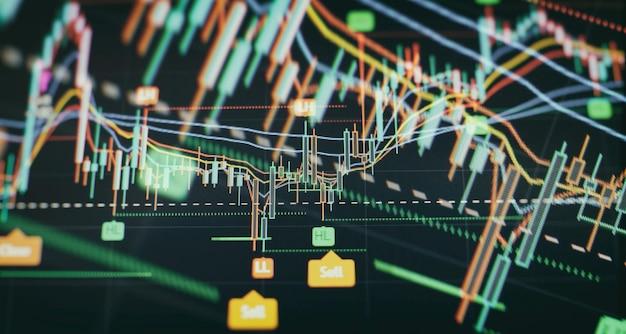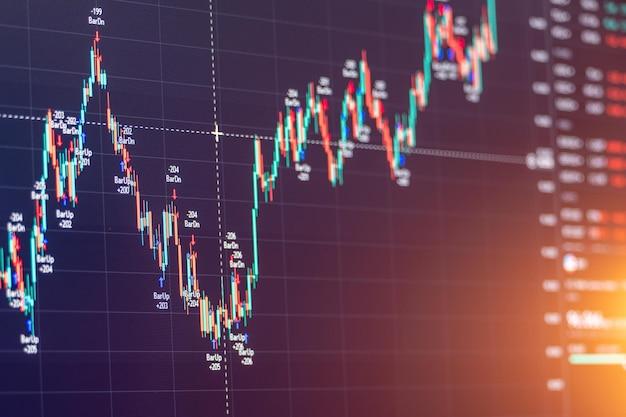Cryptocurrency trading can be a complex process that involves many factors that influence the market. One factor that traders should keep a close eye on is “funding rates.” But what are crypto funding rates? How do they work, and why are they such an essential element in the trading world?
In a nutshell, a funding rate is a recurring fee or payment that traders pay or receive for holding a position in a perpetual futures contract. These contracts are used to trade cryptocurrencies, including Bitcoin and Ethereum, with no expiration date. The funding rate can be positive or negative, and it determines the cost of holding a long or short position.
Negative funding rates are a bullish signal, as shorts are paying longs to maintain their position. On the other hand, positive funding rates are a bearish signal, as longs have to pay shorts to hold on to their position.
So, what’s the best funding rate trading strategy? How do you leverage this information to increase your profits? Understanding funding rates is essential for developing an effective trading strategy and making smart investment decisions.
In this blog post, we’ll explore funding rates in the crypto world, how they work, and how they can impact your trading. Additionally, we’ll delve into the Bitcoin futures perpetual funding rate on all exchanges and provide you with valuable insights on how to use funding rates to your advantage. Let’s get started!
Understanding the Crypto Funding Rate
If you’re a trader or a cryptocurrency enthusiast, you might have come across the term “funding rate.” The crypto funding rate is a mechanism used on derivatives exchanges to balance the price of perpetual swap contracts with the underlying asset’s price. In this section, we’ll dive deeper into what funding rates are and how they affect the trading cryptocurrency.
What is Crypto Funding Rate
In simple terms, funding rates are fees that traders pay to hold long or short positions in perpetual swap contracts. The purpose of this mechanism is to keep the price of the perpetual swap contract in line with the underlying asset’s price. If the contract’s price is below the spot price, long position holders pay a fee to short position holders, and vice versa.
How is Crypto Funding Rate Calculated
The funding rate is calculated based on the difference between the perpetual swap contract’s price and the underlying asset’s price. If the contract’s price is above the spot price, long positions pay short positions. If the contract’s price is below the spot price, short positions pay long positions. The formula for calculating funding rates varies by exchange, but most use an algorithmic formula that factors in the interest rates of both assets.
Why is Crypto Funding Rate Important
The funding rate is important because it can affect a trader’s profits or losses. If the funding rate is high, traders may not be able to hold on to their positions for a long time, which can result in greater trading fees. Additionally, traders may have to close their positions if the market goes against them to avoid paying high fees.
In conclusion, funding rates play an essential role in cryptocurrency trading, and understanding them is key to trading cryptocurrency derivatives. By keeping an eye on funding rates, traders can assess market sentiment and make informed trading decisions. Remember that the funding rate is just one of many factors that influence cryptocurrency prices, so it’s crucial to keep an eye on other market indicators to avoid being blindsided by sudden price shifts.
Understanding Crypto Funding Rates
If you’re new to crypto trading, you might have come across the term “funding rates.” In simple terms, funding rates are fees that traders pay to hold long or short positions on margin trading platforms. These fees are either paid or received depending on the current market sentiment and the position size.
How Funding Rates Work
When you hold a long position, you’re borrowing funds from the exchange to buy an asset, hoping that its price will go up. In contrast, a short position is when you borrow an asset from the exchange, sell it at the current market price, and then buy it back at a lower price to make a profit.
Funding rates come into play when you hold these positions for an extended period. If the demand for a particular asset is high, the funding rate will be positive, meaning that long traders will pay short traders. Conversely, if the demand is low, the funding rate will be negative, and short traders will pay long traders.
Why Funding Rates Matter
Funding rates can significantly impact your trading strategy, so it’s essential to understand how they work. If you’re a long-term trader, it’s best to avoid entering a long position with a high funding rate because it can eat into your profits over time. Similarly, if you’re short-term, try to avoid entering a short position when the funding rate is negative, as it can increase your trading costs.
Moreover, funding rates can act as an indicator of market sentiment. For instance, if the funding rate is positive for a prolonged period, it could indicate that the majority of traders are bullish, and vice versa.
Crypto funding rates are an essential aspect of crypto trading on margin platforms. They can impact your trading costs, profits, and act as a sentiment indicator. By understanding how funding rates work, you can better manage your trading strategy and avoid costly mistakes.
Negative Funding Rate Bullish
When it comes to crypto trading, negative funding rates can be a positive sign for bullish investors. This is because negative funding rates occur when the market is heavily shorted. In simple terms, this means that there are more investors betting on the price of a particular cryptocurrency decreasing instead of increasing.
What is a funding rate
Before we dive into why negative funding rates can be bullish, let’s first define what a funding rate is. In crypto trading, a funding rate is the fee paid by one party to another to keep a futures or swap contract open over a certain period of time. The fee is usually calculated based on the difference in the price of the asset and the futures or swap price.
Negative Funding Rates
When a funding rate becomes negative, it means that the party holding the short position is paying the long position. This happens because the market is heavily shorted, and there aren’t enough buyers to fill all the orders. When this occurs, the market can become oversold, and prices can begin to rise as buyers start to enter the market.
Bullish Investors
As mentioned earlier, negative funding rates can be a positive sign for bullish investors. When the market is heavily shorted, and prices are falling, it can be a good time for buyers to enter the market and purchase the asset at a discounted price. As buyers enter the market, the price can start to rise, and short sellers may start to close their positions, causing prices to rise even further.
In conclusion, negative funding rates can be a positive sign for bullish investors. They occur when the market is oversold and can lead to a price increase as buyers enter the market. However, as with any investment, it’s important to do your research and consult with a financial advisor before making any trades.
Funding Rate Trading Strategy
One of the trading strategies that utilize funding rates is known as “carry trading”. This strategy involves buying an asset with a high funding rate and simultaneously selling an asset with a low-funding rate. As we know, funding rates are like interest rates and are charged every 8 hours by exchanges for holding long or short positions. Those who long the asset pay the funding rate, and those who short the asset receive it.
The goal of the carry trade is to earn the difference between the high and low funding rates. This difference is commonly referred to as the “carry”. For example, if the funding rate for Bitcoin is 0.06%, and the funding rate for Ethereum is 0.01%, a trader could long Bitcoin and simultaneously short Ethereum.
The trader would earn 0.05% per day on the margin used for the trade as long as the funding rates remain the same. The trader’s gains would come from the funding payment they receive from the short position, which is more than the funding costs they have to pay for their long position.
However, traders must be careful when using this strategy as the funding rates can change quickly, and in some cases, funding rates can even turn negative for long positions. So, this strategy requires careful market analysis and planning to determine the best entry and exit points.
Overall, funding rates are essential elements of trading in the cryptocurrency market, and traders must understand how funding rates work. They can influence trading strategies and positions, and by keeping an eye on funding rates, traders can make profitable trades. The carry trading strategy should not be used in isolation, but it can be combined with other trading strategies like trend analysis and market sentiments to achieve better results.
What is a Funding Rate Crypto
Cryptocurrency trading can be complex, and one of the essential elements of this trading is funding rates. So, what is a funding rate in crypto, and why is it crucial?
The Definition of Crypto Funding Rate
A funding rate is an interest rate charged on leveraged trades in cryptocurrency markets. This rate is an essential element of trading on margin because it allows traders to borrow funds to increase the size of their trades. Funding rates are calculated based on the difference between the current market rate and the interest rate that is payable on the loan.
How Does Crypto Funding Rate Work
When trading on margin, traders borrow funds from a broker to increase their trading size. These funds come with an interest rate, and traders need to pay back the borrowings plus the interest. A funding rate is charged every eight hours to reflect the interest rate on the borrowed funds. The funding rate can be negative or positive, depending on the buying or selling interest in the market.
Why is Crypto Funding Rate Important
Funding rates are an essential component of trading on margin. They can either reduce or increase your trading profits. High funding rates can be detrimental to traders because they increase the cost of borrowing, reducing profitability. On the other hand, low funding rates can increase your profitability by reducing borrowing costs.
In summary, a funding rate is an interest rate charged on leveraged trades in cryptocurrency markets. The rate is calculated based on the difference between the current market rate and the interest rate on borrowed funds. Funding rates can reduce or increase trading profits, depending on whether they are positive or negative. It is essential to understand funding rates to make informed trading decisions while trading on margin.
Bitcoin Futures Perpetual Funding Rate on All Exchanges
Bitcoin’s popularity has grown exponentially over the years, and it’s now the most traded cryptocurrency. It’s no wonder that investors are always on the lookout for ways to maximize their returns. Enter Bitcoin futures perpetual funding rate.
Understanding Bitcoin Futures
In the simplest terms, Bitcoin futures are contracts that enable traders to speculate on the future value of Bitcoin. These contracts determine the price of Bitcoin at a future date. The perpetual funding rate, on the other hand, is a funding mechanism specific to Bitcoin perpetual futures contracts. It ensures that the futures contract price converges to the spot price of the underlying asset.
How Does Perpetual Funding Rate Work
The crypto funding rate is a mechanism that regulates the price of Bitcoin futures contracts. The funding rate is set by the exchange and is paid every 8 hours. If the perpetual contract price is above the spot price, long position holders pay short position holders. If the contract price is below the spot price, short position holders pay long position holders.
All Exchanges
Many reputable exchanges offer Bitcoin futures perpetual funding rate trading. Some of these exchanges include Binance, Bitfinex, Bitmex, and Bybit, to name a few. These exchanges provide traders with several perpetual contract trading options, including long, short, or variable positions.
Understanding Bitcoin futures perpetual funding rate can be a game-changer in the crypto investment world. Traders can maximize their profits by investing in Bitcoin futures contracts while being mindful of the funding rates in place. With many reputable exchanges offering Bitcoin futures perpetual funding rate trading, traders have many options to choose from. It’s essential to do your research and choose an exchange that suits your investment needs.



